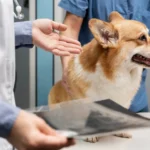
Contents
Sepsis is a severe, life-threatening condition that occurs when an infection in the body triggers a widespread inflammatory response. In Cats & Dogs, sepsis can develop quickly and can be fatal if not treated immediately. It’s often the result of untreated infections, such as those caused by wounds, dental disease, urinary tract infections, or even post-surgical complications.
For pet owners, recognizing the signs of sepsis and seeking immediate treatment is critical to increasing your pet’s chances of survival and recovery. In this blog, we will discuss the symptoms of sepsis in pets, how to manage the condition, treatment options, and steps you can take to prevent it from occurring in the first place.
What is Sepsis in Pets?
Sepsis occurs when an infection, often caused by bacteria, spreads throughout the body and triggers an inflammatory response. The body’s immune system, in trying to fight off the infection, ends up causing widespread inflammation, which can damage organs and tissues.
Common causes of sepsis in pets include:
- Infections: Sepsis can develop after an untreated infection, such as a bacterial infection in the lungs, urinary tract, or gastrointestinal system.
- Wounds or Abscesses: Any open wound, bite, or surgical incision that becomes infected can lead to sepsis if not properly treated.
- Post-Surgical Infections: If a pet undergoes surgery, there’s always a risk of infection, and untreated infections can develop into sepsis.
- Dental Disease: Severe periodontal disease or tooth abscesses can lead to bacteria entering the bloodstream and causing sepsis.
- Urinary Tract Infections (UTIs): If left untreated, UTIs can spread to the kidneys and eventually cause sepsis.
Sepsis can affect pets of any age, breed, or size, but it is especially dangerous for young, old, or immunocompromised pets.
Recognizing the Symptoms of Sepsis in Pets
Recognizing the symptoms of sepsis early is crucial to providing your pet with the treatment they need. The symptoms of sepsis in pets can vary, but they often include a combination of the following:
- Fever or Hypothermia
Pets with sepsis may have an abnormally high body temperature (fever) or, conversely, their body temperature may drop dangerously low (hypothermia). Both conditions can indicate that the body is fighting an infection and reacting to the inflammation caused by sepsis. - Rapid Heart Rate and Breathing
Increased heart rate and rapid breathing are signs that the body is under stress. Sepsis can cause the heart to pump faster in an effort to deliver oxygen to vital organs. - Lethargy and Weakness
One of the most common symptoms of sepsis is extreme lethargy. Pets with sepsis will often appear very weak and may refuse to eat or drink. They may also become disoriented or unable to stand or walk properly. - Gum Color Changes
Sepsis can cause a lack of oxygen in the blood, which may result in pale or blue-tinged gums. This is a serious symptom that indicates that the organs are not receiving enough oxygen, and immediate veterinary attention is required. - Vomiting and Diarrhea
Gastrointestinal symptoms like vomiting and diarrhea are common in pets with sepsis. These symptoms occur due to the body’s inflammatory response to infection and can contribute to dehydration, making the situation more severe. - Decreased Urine Output
If your pet is producing little or no urine, it could indicate that the kidneys are shutting down due to sepsis. This is an emergency and requires immediate medical care. - Abdominal Pain or Swelling
Sepsis can cause inflammation and swelling in the abdominal area, especially if the infection is in the gastrointestinal tract or urinary system. Pets may show signs of pain when their abdomen is touched.
Treatment for Sepsis in Pets
Sepsis is a medical emergency that requires immediate intervention. Treatment for sepsis in pets typically involves hospitalization and aggressive care. Here’s what you can expect:
- Intravenous (IV) Fluids
Pets with sepsis are often severely dehydrated and need to be rehydrated with IV fluids. Fluids help stabilize blood pressure, support kidney function, and ensure proper organ function during recovery.
- Antibiotics
Since sepsis is usually caused by a bacterial infection, pets are typically treated with broad-spectrum antibiotics that target a wide range of bacteria. Once the source of the infection is identified, more specific antibiotics may be administered.
- Oxygen Therapy
If your pet is experiencing difficulty breathing or signs of organ failure, oxygen therapy may be provided to ensure their body is getting enough oxygen to function properly. - Pain Management
Pets with sepsis are often in significant pain, especially if they are experiencing abdominal issues, wounds, or trauma. Pain relief is crucial to ensuring your pet is comfortable during treatment. - Surgery (if necessary)
In some cases, surgery may be required to remove the source of infection, such as an abscess or infected tissue. For example, if the sepsis is caused by an infected wound, the vet may need to drain the wound or remove necrotic tissue. - Monitoring and Supportive Care
Pets with sepsis require close monitoring in the hospital, especially during the initial stages of treatment. Vets will continuously monitor heart rate, breathing, and blood pressure, making adjustments to treatment as necessary.
Preventing Sepsis in Pets
While sepsis can’t always be prevented, there are steps you can take to reduce your pet’s risk:
- Maintain Regular Vet Check-ups
Regular visits to the vet can help catch infections early before they escalate into sepsis. Make sure your pet receives vaccinations, routine check-ups, and preventative care. - Keep Your Pet’s Wounds Clean
If your pet has a wound, bite, or scratch, clean it promptly with mild antiseptic and keep it covered to prevent infection. For serious injuries or deep wounds, seek immediate veterinary care. - Treat Infections Promptly
Don’t delay treatment if your pet shows signs of infection, whether it’s a tooth abscess, urinary tract infection, or gastrointestinal issues. Early treatment can prevent infections from progressing to sepsis. - Monitor for Signs of Illness
Keep an eye on your pet for any changes in behavior, appetite, or bathroom habits. If you notice symptoms like vomiting, diarrhea, lethargy, or difficulty breathing, contact your vet immediately. - Avoid Risky Environments
Try to minimize your pet’s exposure to environments that could introduce infections, such as dirty or contaminated areas, unvaccinated animals, or places with heavy bacterial growth.
When to Seek Emergency Care for Sepsis
If you suspect your pet has sepsis, don’t wait. Immediate intervention is critical to improving your pet’s chances of recovery. Seek emergency pet care if your pet shows any of the following:
- Difficulty breathing or panting
- Pale or blue gums
- Vomiting, diarrhea, or lack of appetite
- Lethargy, confusion, or collapse
- Swelling or pain in the abdomen
- Reduced or no urine production
Sepsis is a medical emergency, and early treatment can make a significant difference in your pet’s recovery.
Conclusion
Sepsis in pets is a serious condition that requires immediate medical attention. Recognizing the symptoms, providing initial care, and seeking emergency care for pets are crucial steps in helping your pet recover. By maintaining regular vet visits, monitoring for signs of illness, and treating infections promptly, you can help reduce your pet’s risk of developing sepsis.
At North MS Pet Emergency, we are here to provide urgent care for pets facing sepsis or other health emergencies. If you believe your pet is suffering from sepsis, don’t hesitate to contact us immediately for the care they need.
Contact Us Now for immediate assistance, or visit us for emergency care for pets after hours.




